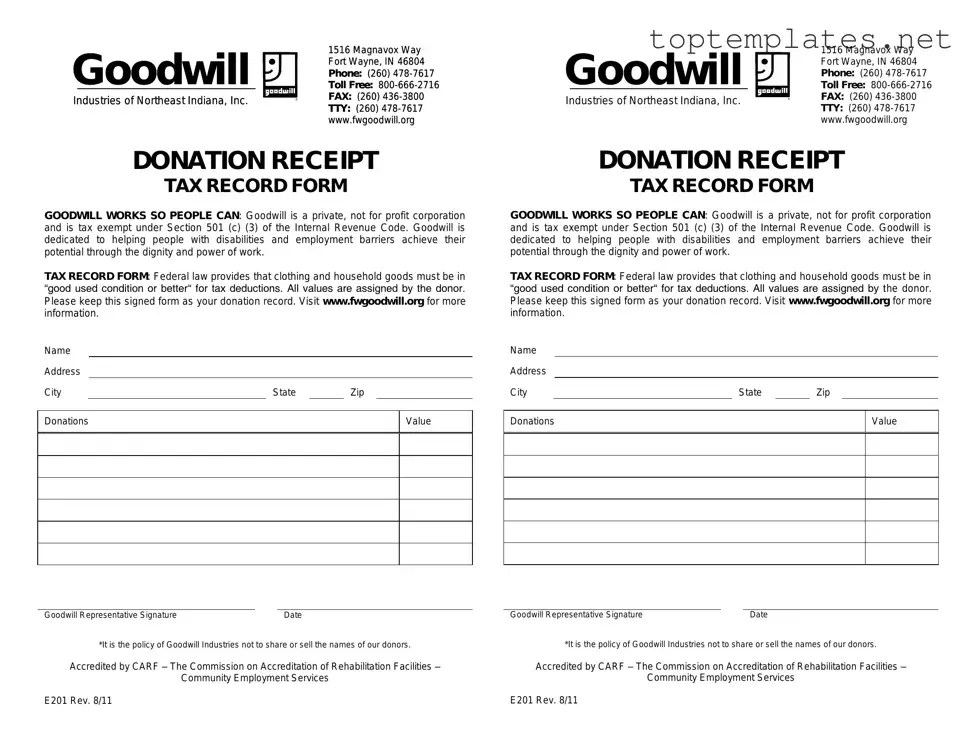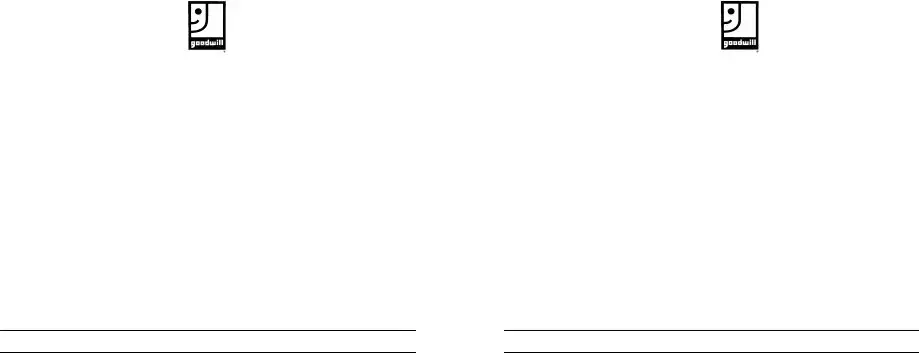What is a Goodwill donation receipt form?
A Goodwill donation receipt form is a document given to you by Goodwill after you donate items. It's necessary for keeping a record of your donation for tax deduction purposes. When you drop off your donations, Goodwill will offer this receipt, acknowledging the items you've given. However, it's your responsibility to list the items donated and determine their fair market value.
How can I get a Goodwill donation receipt form?
You can receive a Goodwill donation receipt form whenever you make a donation at a Goodwill drop-off location. Upon donating, ask the staff for a receipt, and they should provide you with one. Make sure to fill out and retain this receipt for your records. In some instances, you can also find printable versions of the donation receipt form on the official Goodwill website, allowing you to prepare it in advance.
What information do I need to include on my Goodwill donation receipt form?
On your Goodwill donation receipt form, you need to include detailed information about the items you've donated. This includes descriptions of the items, their condition (new, like new, used, etc.), and your estimate of their fair market value. Besides the details about the donated items, you should also provide your name, the donation date, and any other information required by the form. Remember, it's important to be as accurate and honest as possible when estimating the value of your donations.
Can I claim a tax deduction without a Goodwill donation receipt?
Generally speaking, to claim a tax deduction for any donation to charity, including Goodwill, you must have a written acknowledgment from the charity for any contribution of $250 or more. For donations less than $250, a bank record or a receipt from the charity showing the charity’s name, the date of the donation, and the amount of the contribution will suffice. Therefore, while it's possible to claim a deduction without the standard Goodwill donation receipt, having this receipt simplifies the process and serves as a solid piece of evidence for your donation should you need it for tax purposes.

